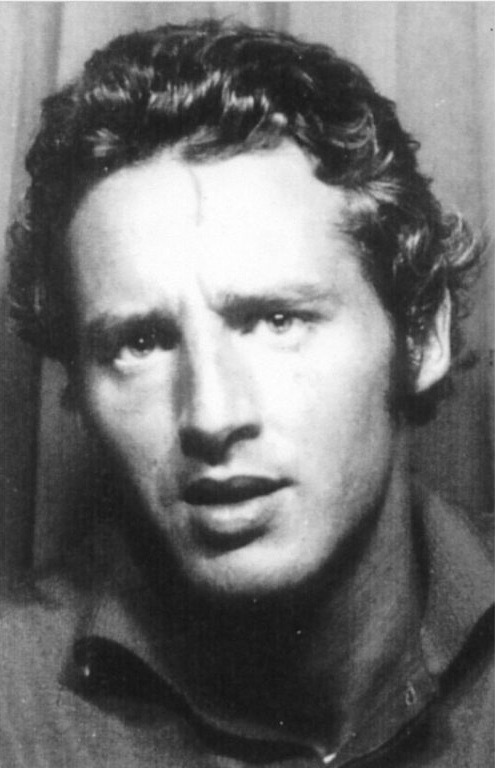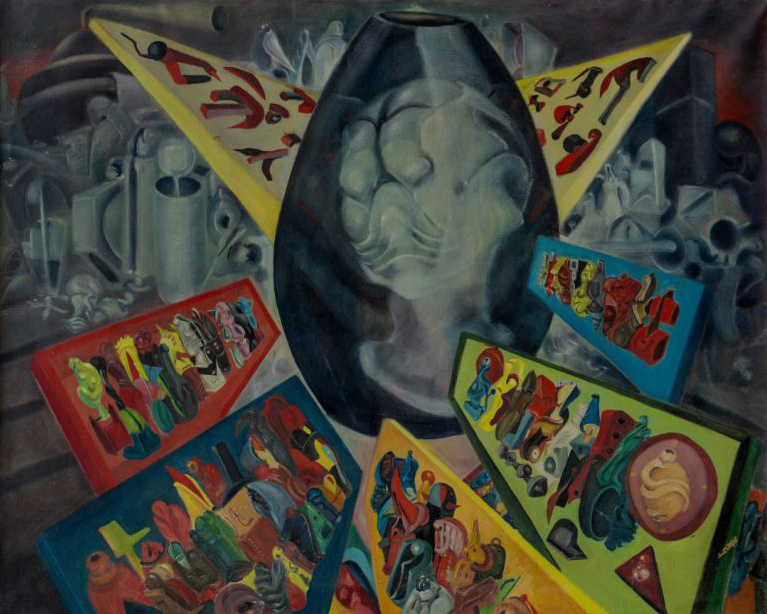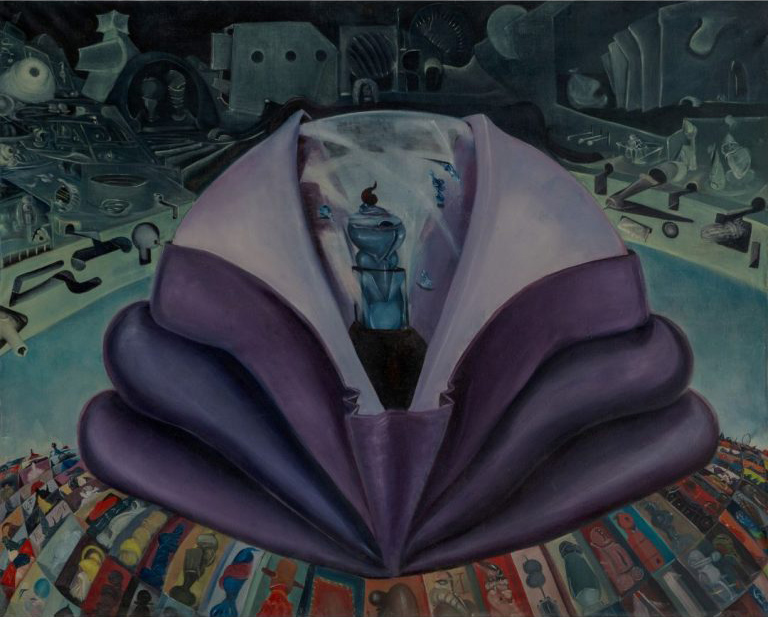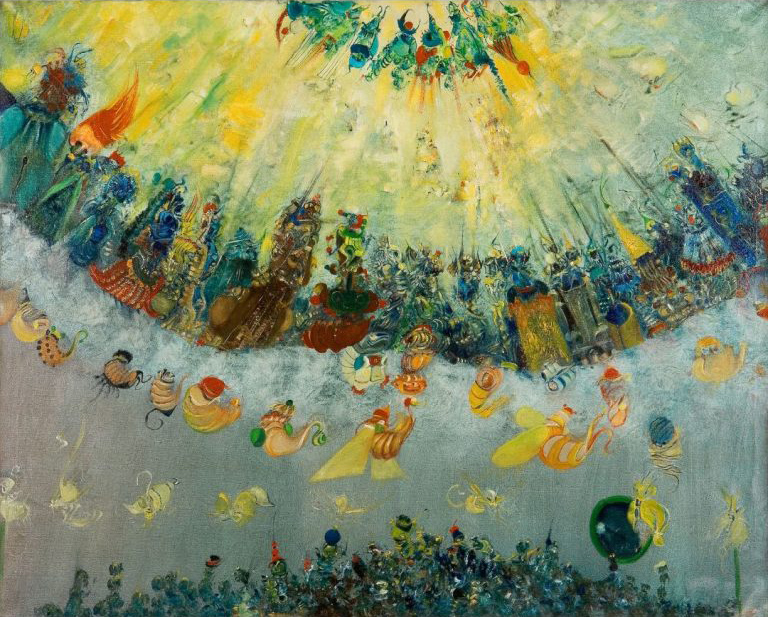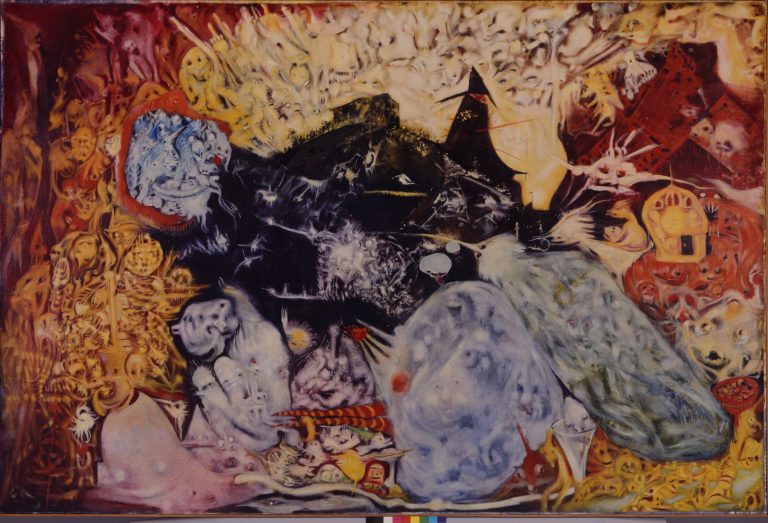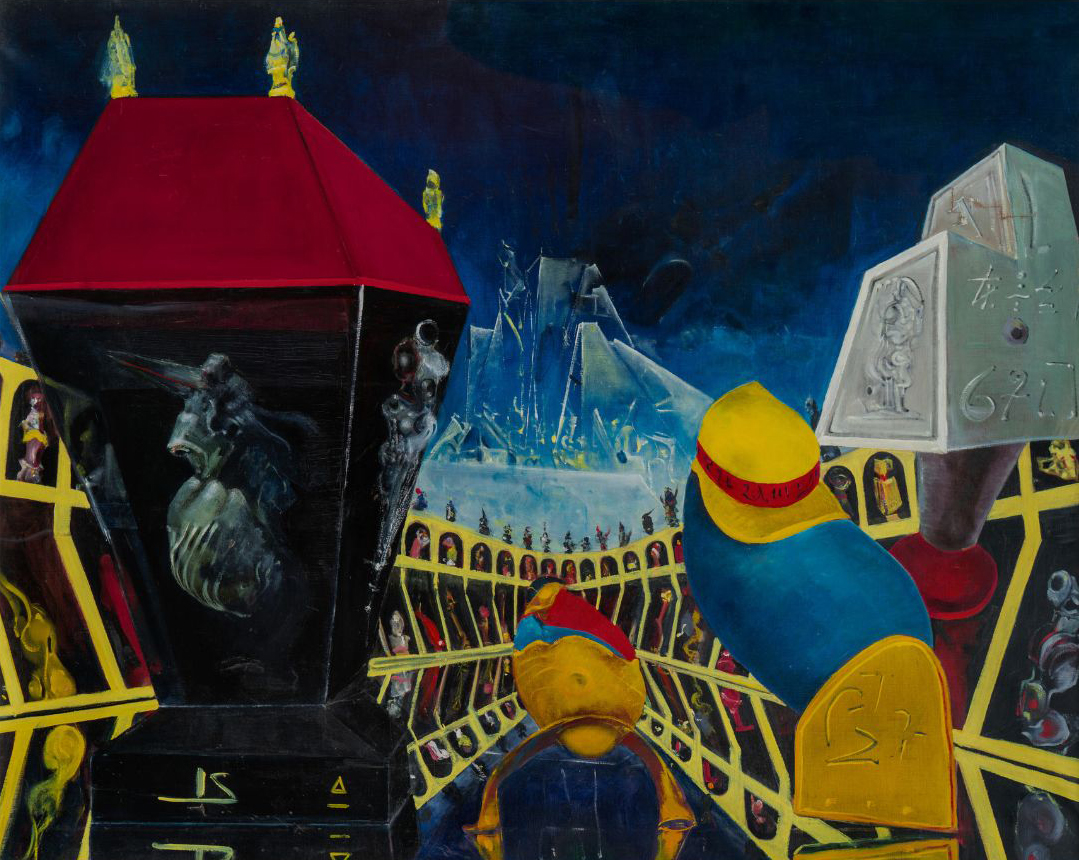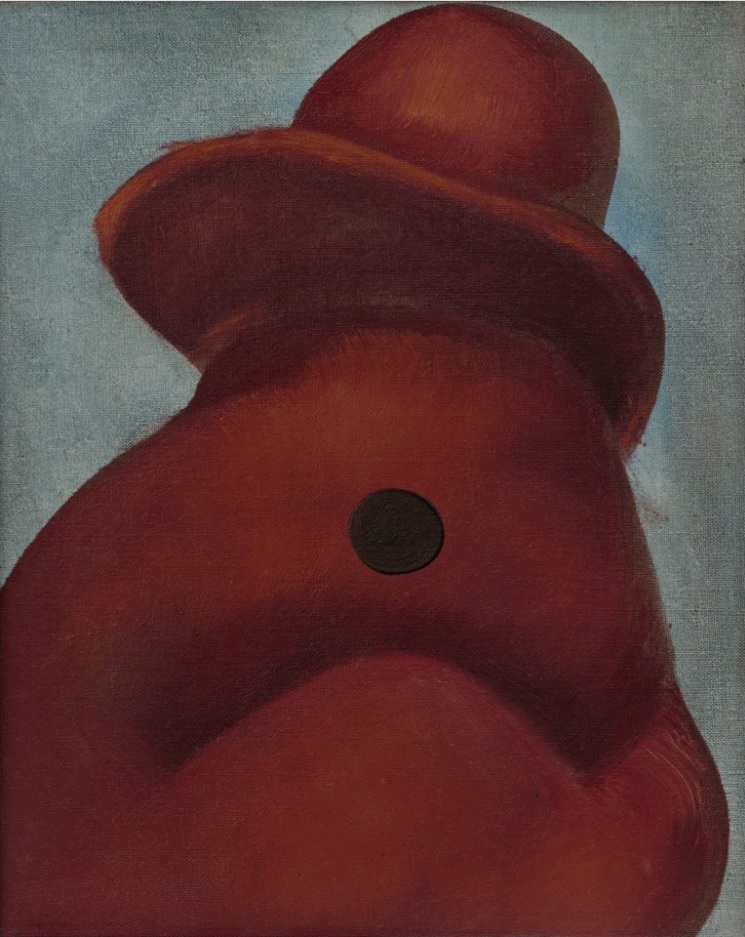Who was the Breton Albert Merour ? A major painter of the Brest surrealist scene, he was one of those artists outside the art market who created out of pure passion. His worlds, both fascinating and singular, spread out on the canvases with nervousness, but attention. Unidivers spoke with Ronan Goulardthe son of his second wife Josette Goulard-Dargornherself an artist, on the occasion of a tribute exhibition at the gallery The Comoedia de Brest, from July 30 to August 13, 2022. Presentation of this unknown artist.
An exhibition ofAlbert Merour, who died in 2001 in Nantes, is one of those exceptional events due to its rarity. The last exhibition dates back ten years, the previous one twenty… The art gallery The Comoedia at Brest pays homage to the painter he was, a major player in the surrealist scene in Brest in the 1960s, but today unknown to the general public.
Born of a promise between the director of the gallery and the wife of the deceased, the exhibition brings together around forty works which, exceptionally for an art gallery, will not be put up for sale. ” My mother followed Albert’s wish before his death to group together the paintings as much as possible, so that they could be exhibited, together if possible, but to continue to ensure that they were not sold. “, recount Ronan Goulardthe heart son ofAlbert Merour. Throughout his career, the artist had in fact chosen to stay out of the art market. He never wanted to sell his works or present his paintings separately. ” He painted out of passion, his goal was never to sell his paintings and make a living from his art. “Since the disappearance of Josette Goulard-Dagorn in 2013, the children took over and respect this desire in turn. “ Albert had three children quite late. They are about thirty years old. They lived with their father’s paintings, but did not know him when he was painting. »
Born in 1942 in Plomodiern, Albert Merour trained as a free candidate at the School of Fine Arts in Brest. A prolific artist, he has always worked in parallel, whether in Brittany or elsewhere. ” It was the 60s and 70s, we lived in a group of young artists, my mother was also part of it. In Brest, he had a place and painted, and when they decided to go south, they found a house “, remembers Ronan who was then only a child. “ At that time, he was doing seasonal jobs: he worked in the vineyard, in costumes and was a manager in the cinema. He was also a record store. Apart from gifts to his loved ones, he did not want to part with his paintings, he could not. ” The only exception was in 1981. He donated a painting to Amnesty International to be auctioned off with the proceeds going to the charity. Unfortunately, the canvas disappeared without being sold… This position, perhaps marginal for some, explains the ignorance that we have today of his work, but listen Ronan Goulardit is to touch on the relationship that the artist maintained with his painting and to understand his decision.
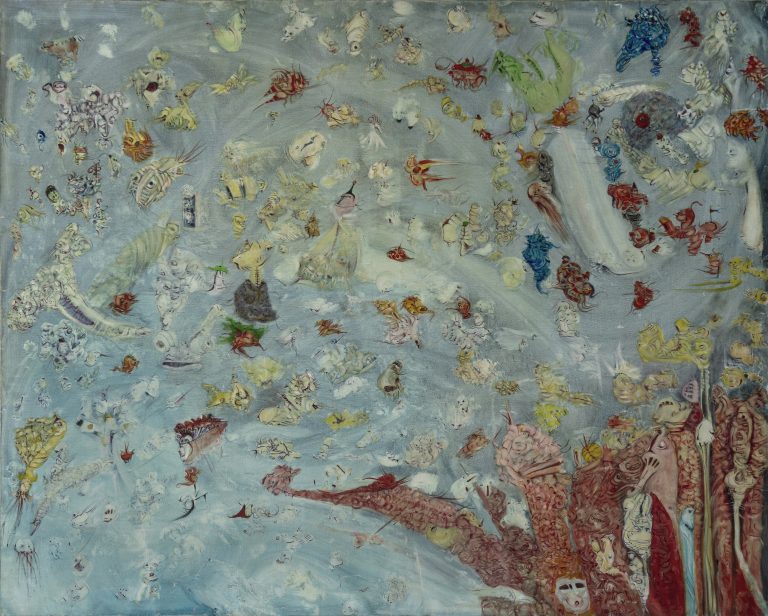
The painter maintained an almost trivial relationship with his works, he needed to see them. He gave himself body and soul to his paintings, his unconscious being the source of his creation. ” He moved from exhibition to exhibition “, he still remembers. “ I remember, when I was a kid, we had the linen sheets rolled up in the van and we went to Belgium, Yugoslavia, Italy. We unrolled them, put them on a frame and exhibited. The painter was in pure creation, in contact with matter, particularly oil painting. ” It’s a crazy parallel, but we don’t make children to sell them. His pictorial offspring was a part of him, because he let what he had inside speak. The result is a singular surreal universe, a lively and nervous painting. “ Even at the Beaux-Arts, he was soon in a rather brutal mode, with a knife, with a lot of paint and sliced lines. “, he continues before adding: “ He was someone quite lively and abrupt, who threw wood in all directions “. This strong character is found in his practice, however, he spent a lot of time on his paintings, sometimes a month or more.
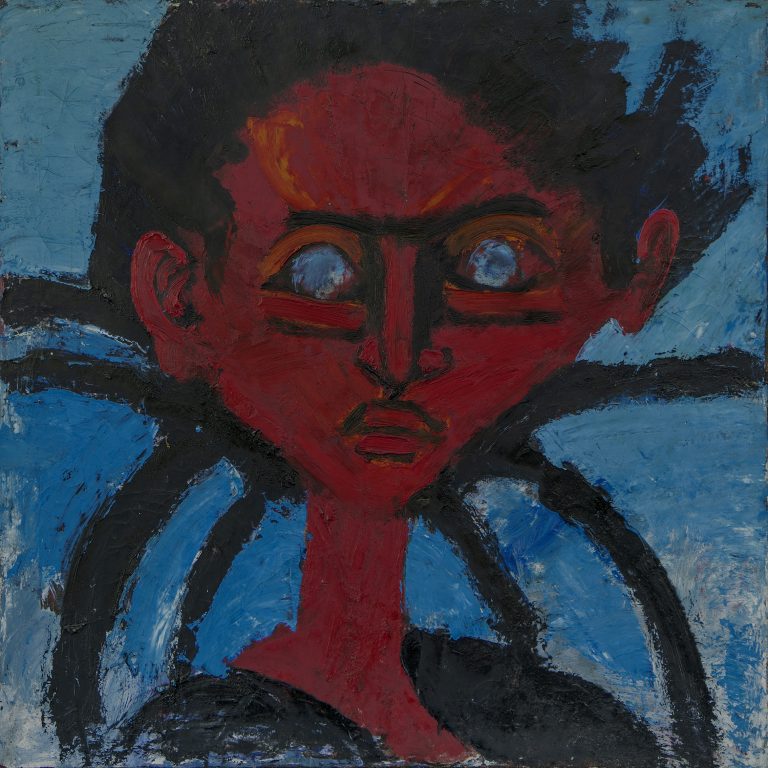
His first paintings made in the early 60s are considered by his brother, the poet Herve Merour, as fauvists. The self-portrait Red Head (1964) and the Portrait Woman with Red Hair (1963) are all paintings that show the evolution of his practice over the years. Because when, at the end of the 1960s, a real artistic effervescence was born in Brest, Albert Merour appropriates his painting and becomes a major player in the Brest surrealist scene alongside other students of Fine Arts: Xavier Vasseur, Georges Roussel, Jean-Philippe Domecq, André Cariou or Jean-Yves Brelivet, Michel Pagnoux and Bernard June. He found in the person of Suzanne Besson, one of his former professors, a mentor if one can say so, at least a person who particularly accompanied him in the early years. ” She was also part of the group Phases [mouvement artistique né dans les années 1950 autour d’une revue éponyme, porté par des peintres, des poètes et des écrivains européens et latino-américains, ndlr.]. I have collections where she appears with Albert “, declares the son of heart of the painter. ” She saved him time after Fine Arts. She helped expose it and most certainly released it at that time. »
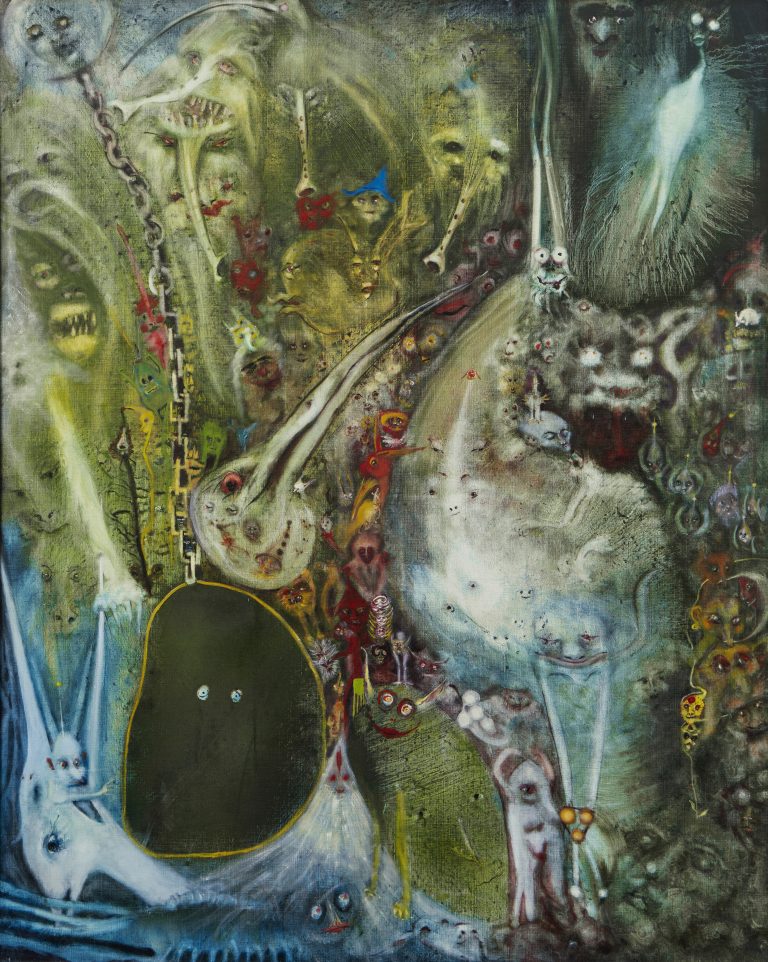
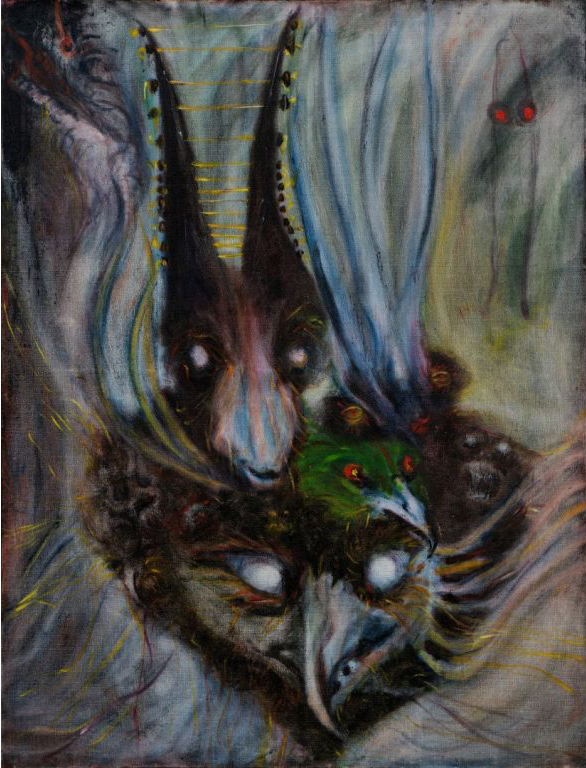
The material is then reduced and he lets himself go to a more personal creation, an inner world transcribed on linen canvases. It was during this period that his little characters were born, resembling creatures from an imaginary horizon. He explores his unconscious and transcribes thoughts, ” visions », in elaborate pictorial improvisations, sometimes dark abstract landscapes, sometimes colorful hallucinated worlds. ” It’s a very rhythmic painting, he listened to a lot of jazz at this time. His practice then took a Dadaist turn and his influences became diverse. ” We are what we have eaten. What we have been exposed to comes out on the canvas. We find characteristics of symbolism in The Solar Thorn weighs the mad father (1968), The cabin of joys (1969) or even In the Kingdom of the Quintessence (1969). Then, his worlds plunge into science fiction. We think by looking Gap box (1970), Sougalmelism (1970), I chew a machine (1972) or The brain of man (1972) to the aesthetics of German expressionist cinema. In particular to the films of the German director Fritz Lang, in particular Metropolis (1927), perhaps reminiscent of his experience in cinema. Also, “ in the 1960s, he was very fond of the Philippe Druillet drawing », founder of the monthly Métal Hurlant.
Surrealist poetry, which he began in the mid-1960s, became just as important as painting, from which he moved away for a while. He creates poetic games with his brother Hervé, like the poetic enunciation game “Illo Mollo”. These two practices do not go without each other, links are woven, correspondences are to be discovered. You have to know both to talk about the whole work of the late painter. The 1970s were accompanied by collective work, a sort of “exquisite texts”. ” The texts were done together, they passed the buck. As a kid in the band, I was part of that too “recalls Ronan before entrusting:” They were young artists, they were quite playful, they invented games with stories about squares, bets, etc. »
All their references, a nod to their respective work or other surrealist poems, show through in their writings, and in the painting ofAlbert Merour. The Spiritual Hunt, one of his last paintings in the late 80s, refers to the title of a fake poem by Rimbaud, written by two surrealists Akakia-Viala and Nicolas Bataille at the beginning of the 20th century. ” They waited a while before admitting that they were the authors to see the reactions it aroused. »
A member for a time of the Phases group, he moved away from it at some point. ” In my memory, the members of Phases were older people who were into surrealism indeed, but there was not the dynamism that I could see from the side of Albert and the group around him. Ronan, a child, remembers the emulation of the Brest surrealists there, grown-up children who had fun with their art in total freedom of creation. There was his brother, his wife, and a number of painters and musicians who formed one group. ” There were constraints with Phases and Albert was someone who didn’t want to embarrass himself. He joined groups, but if it didn’t suit him, as a man who knew him in the 1960s said, “he wasn’t easy” “, laughs Ronan. ” There were also other groups in Belgium who came to visit us and to whom we also went. It was always an opportunity to play games by writing texts collectively, by reading them. »
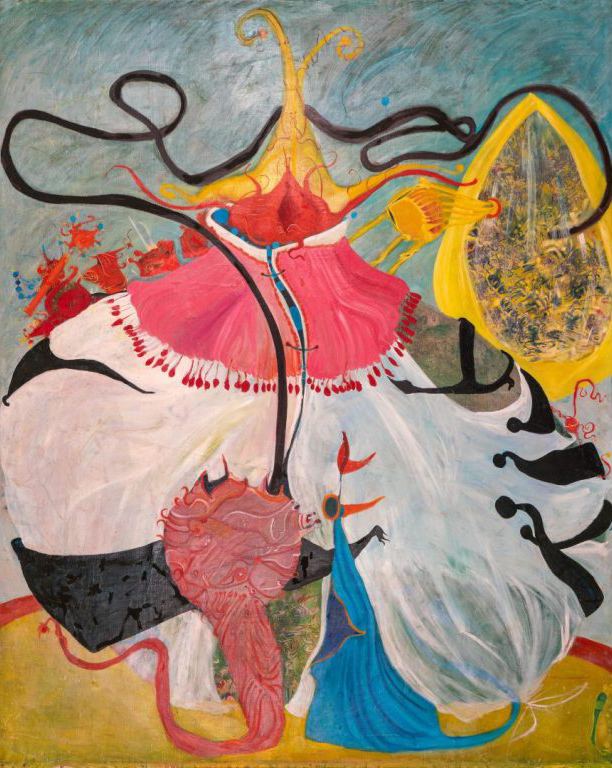
Albert Merour will have produced a hundred works in less than two decades. He stopped large canvases in the early 80s and then painted small miniatures, “but it’s quite anecdotal. He made miniatures of the characters found in his large canvases. » Throughout his short career, the artist was part of a pure creative freedom and fixed interior images on canvas. And as a beautiful tribute, an association was created by the family and bears the name of the painting he had given to Amnesty International, Port du double monde. Unfortunately not having the funds to open a foundation, the family intends to make a donation to a museum so that this forgotten work enters collections and that the artist that he was is thus rehabilitated.
From Saturday July 30 to Saturday August 13, 2022, exhibition Albert Merour, The ComoediaBrest.
35 Castle Street
29200 Brest
+33 (0)2 98 20 88 92
+33 (0)7 68 10 06 25
contact@artcomoedia.fr
The gallery welcomes you from Thursday to Saturday from 2 p.m. to 6 p.m., and by appointment.

